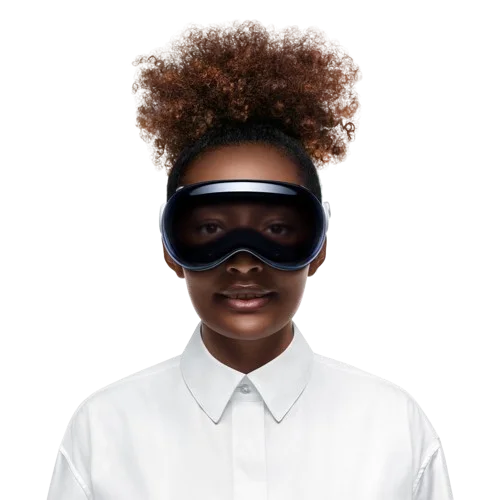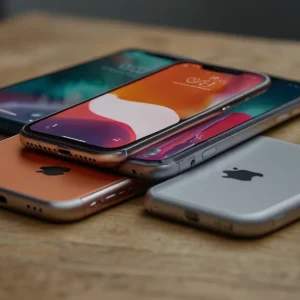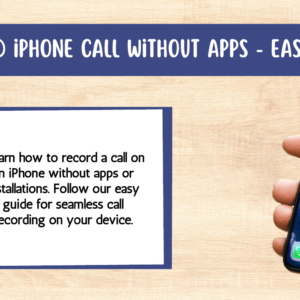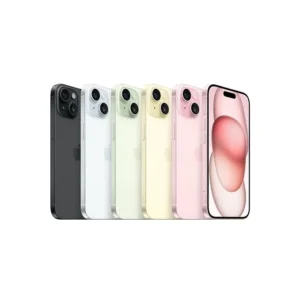Table of Contents
Exploring the ambitious Apple Vision Pro
The Apple Vision Pro has stormed into the realm of wearable computers, and it claims to usher in the era of “spatial computing.” Priced at $3,499, this headset aims to redefine how we interact with technology by seamlessly integrating apps into our sur
Unveiling the Apple Vision Pro: A Revolution or a Weighty Dilemma? roundings. The ads depict people effortlessly incorporating Vision Pro into their daily lives—at work, during household chores, and even while spending time with family.
The Challenge of Innovation
However, Apple faces the uphill task of convincing users that the Vision Pro is not just another headset in a market that has seen its fair share of developments. The tech giant has long championed augmented reality (AR) over virtual reality (VR), emphasizing the potential value of overlaying digital information on the real world. With AR tools in iOS and the incorporation of lidar depth scanners in iPhones and iPads, Apple has been paving the way for the Vision Pro.
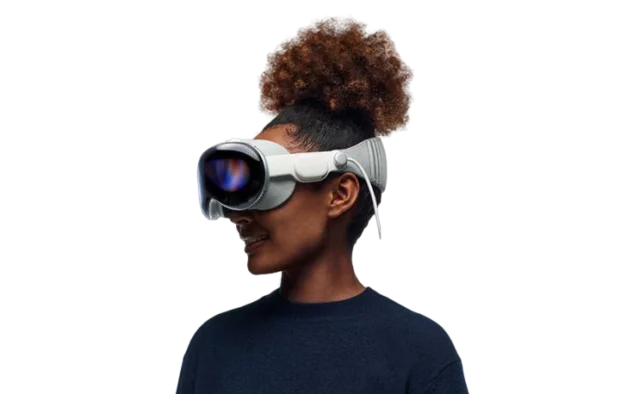
Navigating the Tradeoffs
While the Vision Pro boasts impressive capabilities, it comes with significant tradeoffs that cannot be overlooked. The weight of the device, necessitating an external battery pack connected by a cable, poses a tangible challenge. Yet, the philosophical tradeoffs raise even more critical questions.
Hair Woes and Bag Dilemmas
As users engage with the Vision Pro, they grapple with the practicality of sacrificing their hairstyle every time they wear it. The bulky carrying case, competing for space with a laptop bag, adds to the dilemma. The fundamental query emerges: is the allure of using a computer in this virtual space strong enough to outweigh the simplicity and freedom of using one in the real world?
Hardware Insights
Despite Apple’s reluctance to label the Vision Pro as a VR headset, its functionality aligns with VR experiences. The device, constructed with magnesium, carbon fiber, and aluminum, stands out as a sleek and advanced piece of technology. The front display, intended to maintain a connection with the surroundings, falls short of its promise, offering a ghostly and low-resolution representation of the user’s eyes.
Behind the Scenes
Hidden beneath the surface are an array of cameras, sensors, processors, and fans, working in tandem to deliver an immersive experience. The inclusion of high-resolution front cameras, hand-tracking cameras, lidar scanners, and TrueDepth cameras showcases Apple’s commitment to spatial computing. However, the weight distribution, especially with the external battery, raises concerns about prolonged usage comfort.
The Weighty Dilemma
The Vision Pro’s weight, akin to an “iPad for your face,” becomes a central concern during extended usage. While Apple justifies the use of an external battery to reduce weight, the overall heft remains a significant factor. The challenge of balancing comfort and functionality becomes evident as the device competes with the weight of an 11-inch iPad Pro.
Display Marvels and Limitations
The heart of the Vision Pro lies in its displays, which represent a remarkable leap in technology. Tiny MicroOLEDs with 23 million pixels offer a stunning visual experience. However, the device’s reliance on real-time video passthrough instead of a true optical AR display introduces limitations. Motion blur, color reproduction issues, and a narrower field of view present challenges that users must contend with.
The Intricacies of Control
Apple takes pride in the Vision Pro’s eye and hand tracking control system, presenting it as a leap beyond existing consumer tracking systems. While the initial experience feels empowering, the constant need to focus on elements of control poses a distraction. The system’s dependency on gaze for input introduces challenges in multitasking, deviating from the intuitive independence seen in traditional computing interfaces.
Personas and spatial cameras
The introduction of 3D personas adds a layer of complexity, creating an uncanny and distracting presence during virtual interactions. Spatial cameras, while promising, face limitations in capturing hands in certain positions or environments, affecting the consistency of tracking.
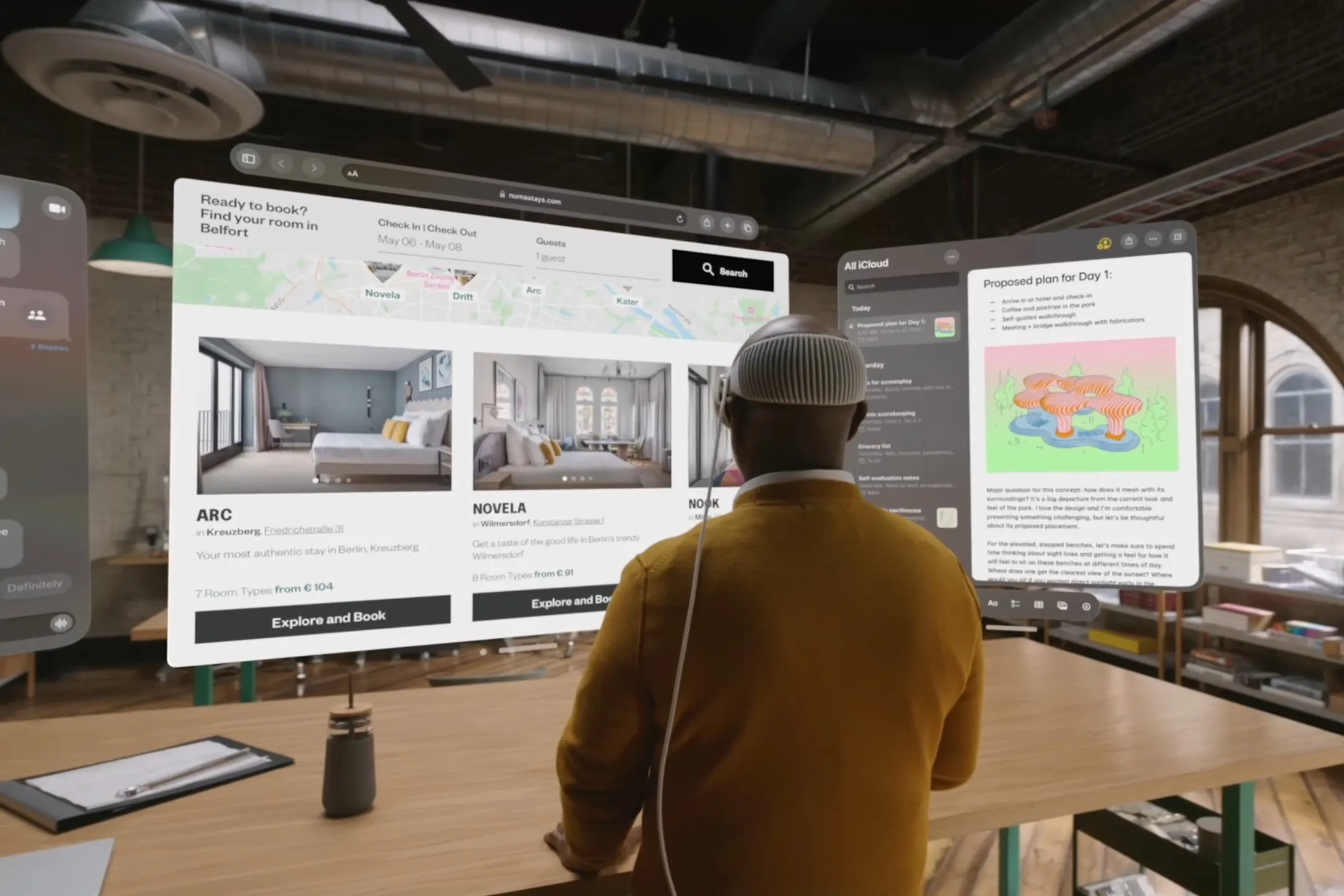
The Enigma of VisionOS
Running on visionOS, a variant of iPadOS tailored for spatial computing, the Vision Pro inherits the maturity of the iPad app library. The comparison to an “iPad for your face” is not far-fetched, with familiar apps functioning similarly. However, the app ecosystem already faces challenges as major developers withhold their apps from Vision Pro. The disconnect between Safari on the Vision Pro and web-based 3D experiences raises questions about its full integration into the spatial computing landscape.
A Chaotic Interface
The freedom to open and arrange apps in a free-floating manner distinguishes VisionOS from iPadOS. Users can create a personalized spatial environment, but the inability to share these experiences with others diminishes the communal aspect of virtual spaces.
Conclusion: A Lone Experience in a Vast Space
The Apple Vision Pro stands as a testament to technological innovation, pushing the boundaries of spatial computing. Yet, it grapples with challenges that make its integration into daily life a nuanced decision. The weight, tradeoffs, and interface quirks contribute to a device that, despite its advancements, creates a somewhat isolated experience. As users navigate the uncharted territory of AR and VR convergence, the Apple Vision Pro beckons them to weigh the magic it offers against the practicality of the world outside.

